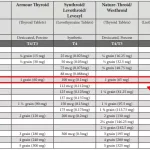Living with endometriosis can feel like you’re stuck in a loop of pain that never ends – especially when that pain settles deep in the pelvis, makes you tense up, or turns everyday moments into uncomfortable reminders. If you’ve tried hormone pills, surgery, or countless over‑the‑counter remedies and still wake up with tight muscles, aching hips, or painful intercourse, you’re not alone. Pelvic floor therapy isn’t a magic cure, but it can be the missing piece that turns “I can barely move” into “I can breathe again.”
Below you’ll find a straightforward rundown of why the pelvic floor gets involved, what the therapy actually looks like, the real‑world benefits, the possible downsides, and how to decide if this approach is right for you. Grab a cup of tea, settle in, and let’s unpack this together.
Why Pelvic Dysfunction
What Is Endometriosis?
Endometriosis is a chronic condition where tissue that resembles the uterine lining grows outside the uterus – on ovaries, fallopian tubes, bowel, bladder, even the pelvic sidewalls. About 1 in 10 women of reproductive age will develop it, and the inflammation it causes can be relentless.
How Lesions Affect the Pelvic Floor
When endometriotic lesions inflame the surrounding area, the body’s natural response is to protect itself. Muscles contract, the pelvic floor tightens, and a “guard” forms around the pain source. Over time this protective tightening can become its own pain generator, a phenomenon described on Dr Seckin’s blog and echoed in research from the National Center for Biotechnology Information.
Typical Symptoms of Pelvic‑Floor Involvement
- Painful intercourse (dyspareunia)
- Urgent or painful urination
- Constipation, straining, or painful bowel movements
- Lower‑back, hip, or groin ache that persists after surgery
- Muscle spasms that feel like a “knot” deep in the pelvis
| Symptom | Endometriosis‑Only | Pelvic‑Floor‑Related |
|---|---|---|
| Pain during periods | ✔ | ✔ (often radiates to back) |
| Painful sex | ✔ (lesion‑related) | ✔ (muscle spasm) |
| Urinary urgency | ✖ | ✔ (tight sphincter) |
| Constipation | ✖ | ✔ (pelvic floor over‑contraction) |
Real‑World Example
Emma (pseudonym) had laparoscopic removal of endometriosis lesions in 2022. The surgery went well, but six months later she still reported a “tight band” feeling around her lower abdomen and painful intercourse. A pelvic‑floor therapist evaluated her and identified chronic muscle spasm in the levator ani. After eight weeks of targeted therapy, Emma’s pain scores dropped by 40 % and she could finally enjoy intimacy again.
Therapy Basics
What Is Pelvic‑Floor Therapy?
Think of it as a specialized form of physical therapy that zeroes in on the tiny muscles that support the bladder, bowel, and reproductive organs. A qualified pelvic‑health physical therapist (often a DPT with additional certification) assesses both external and internal muscle tone, then uses a mix of manual work, guided exercises, and education to restore balance.
Core Techniques
- Manual therapy & myofascial release: The therapist gently massages tight knots, much like a deep‑tissue massage for the back.
- Biofeedback & EMG: Small sensors show you in real time how much you’re squeezing versus relaxing – a visual cue that can be surprisingly empowering.
- Diaphragmatic breathing & visualization: Slow breaths from the belly signal the nervous system to “let go” of the protective grip.
- Targeted Kegels & reverse Kegels: Not the typical “squeeze‑and‑hold” you might have seen on TikTok; reverse Kegels teach you to gently lengthen the pelvic floor.
- Core‑glute integration: Strengthening the surrounding hips and lower back helps the pelvic floor stay relaxed during daily activities.
Home‑Exercise Program
Most therapists give you a short routine you can do at home – usually 3‑5 minutes, twice a day. Here’s a sample you could try after your first appointment (always check with your therapist first):
- Lie on your back, knees bent. Place one hand under your tailbone and the other on your abdomen. Inhale deeply, feel the belly rise, exhale and let the lower back flatten – 5 breaths.
- Reverse Kegel: While gently inhaling, imagine you’re “letting the inside of the belly push down” – a tiny, controlled release. Hold for 3 seconds, repeat 8‑10 times.
- Hip‑hinge stretch: Sit on the floor, legs extended, gently lean forward reaching for your shins. Hold 20 seconds. This opens the hamstrings and reduces tension on the pelvis.
Sample 7‑Day Calendar
| Day | Morning (3‑5 min) | Evening (3‑5 min) |
|---|---|---|
| Mon | Breathing + Reverse Kegels | Hip‑hinge stretch |
| Tue | Core activation (bird‑dog) | Breathing + Reverse Kegels |
| Wed | Breathing + Reverse Kegels | Hip‑hinge stretch |
| Thu | Core activation | Breathing + Reverse Kegels |
| Fri | Breathing + Reverse Kegels | Hip‑hinge stretch |
| Sat | Gentle yoga flow (10 min) | Breathing + Reverse Kegels |
| Sun | Rest or light walk | Breathing + Reverse Kegels |
Proven Benefits
Pain Reduction & Quality of Life
Across several case series, women report a 30‑45 % drop in pelvic pain after 8‑12 weeks of consistent therapy. For instance, the team at Nuvance Health observed that participants who combined manual release with breathing exercises experienced the most noticeable relief.
Improved Bladder & Bowel Function
Because the pelvic floor controls the sphincters, loosening tight muscles often translates into smoother urination and softer stools. A study cited by the Endometriosis Network notes that “70 % of participants saw a reduction in urinary urgency after a 6‑week program.”
Better Sexual Comfort
When the pelvic floor stops spasm‑locking during intimacy, many women describe a return to pleasurable sensations they thought were gone forever. Physical therapist Sallie Sarrel, PT, ATC, DPT, explains that “lengthening the pelvic floor gives it space to relax during sex, which can improve orgasmic potential.”
Holistic Boost to Core Stability
Strengthening the glutes and deep core muscles reduces compensatory strain on the lower back and hips – a common complaint among people with endometriosis. In other words, you not only feel less pain, you move more confidently.
Possible Risks & Red‑Flags
Over‑Activation or Wrong Technique
If you push too hard on Kegels or attempt aggressive stretches without guidance, you might actually tighten the muscles further. That’s why a qualified therapist watches your form, especially during the first few sessions.
Contra‑Indications
- Recent pelvic surgery (usually wait 6‑8 weeks)
- Active infection or severe inflammation
- Uncontrolled hormonal flare‑ups that cause extreme tissue swelling
When to Pause or Seek a Different Provider
If after four weeks your pain intensifies, you notice new numbness, or you develop severe urinary retention, it’s time to speak up. Those are signs the program may need tweaking or a referral to another specialist.
Red‑Flag Checklist
| Symptom | Action |
|---|---|
| Increasing pain during sessions | Stop the exercise, inform therapist |
| New bowel or bladder retention | Contact provider immediately |
| Sharp, radiating pain to thigh | Seek medical evaluation |
| Persistent spasms > 6 weeks | Ask therapist about alternative modalities |
Choosing a Therapist
Credentials to Look For
Seek a DPT who holds a pelvic‑health specialization (e.g., Certified Pelvic‑Floor Physical Therapist – CIPP) and mentions trauma‑informed care – essential for many who have experienced invasive surgeries or sensitive examinations.
Key Questions for the First Call
- How many women with endometriosis have you treated?
- Do you use biofeedback or EMG in assessments?
- What does a typical session look like?
- Can you provide a home‑exercise handout?
Insurance, Cost & Telehealth
Most plans cover pelvic‑floor therapy under CPT code 97162‑97168, but verify beforehand. Telehealth has grown since 2020, and many therapists now offer virtual assessments with a simple video call, which can be a convenient first step.
In‑Person vs. Tele‑Therapy
| Aspect | In‑Person | Tele‑Therapy |
|---|---|---|
| Hands‑on manual release | ✔ | ✖ |
| Immediate visual biofeedback | ✔ | ✔ (screen share) |
| Convenience | ✖ (travel) | ✔ (home) |
| Privacy comfort | ✖ (clinic) | ✔ (own space) |
Integrating Therapy with Other Treatments
Medical & Surgical Options
Hormonal suppressors, NSAIDs, and laparoscopic lesion excision remain first‑line medical strategies. Pelvic‑floor therapy is best seen as a complementary layer that tackles the muscular fallout of those interventions.
Complementary Approaches
- Acupuncture – many patients report added relief for muscle spasm (see Glutescore guide).
- Mindful yoga – focuses on diaphragmatic breathing that dovetails with PT techniques.
- Nutrition – anti‑inflammatory foods may reduce overall pelvic irritation.
Building a Personalized Pain‑Management Plan
Picture a timeline: diagnosis → discuss medical options with your OB‑GYN → if surgery is performed, schedule a pelvic‑floor assessment once healed → begin a 12‑week PT program → transition to a maintenance routine (once or twice weekly). This staged approach prevents the “one‑size‑fits‑all” trap and keeps you in control.
Key Takeaways
Pelvic floor therapy isn’t a stand‑alone cure for endometriosis, but it is a powerful, low‑risk tool that can dramatically reduce pelvic pain, improve bladder and bowel function, and restore enjoyment in intimacy. The therapy works best when you pair it with an experienced, trauma‑informed therapist, stay consistent with home exercises, and remain aware of any warning signs.
If you’ve been battling chronic pelvic pain for months or years, consider reaching out to a pelvic‑health physical therapist – you might be surprised at how much relief a few minutes of mindful breathing and targeted stretch can bring.
What’s your experience with pelvic floor therapy? Have you tried any of the home exercises listed above? Drop a comment, share your story, or ask a question. We’re all in this together, and every tip helps someone else feel a little less alone.


















Leave a Reply
You must be logged in to post a comment.